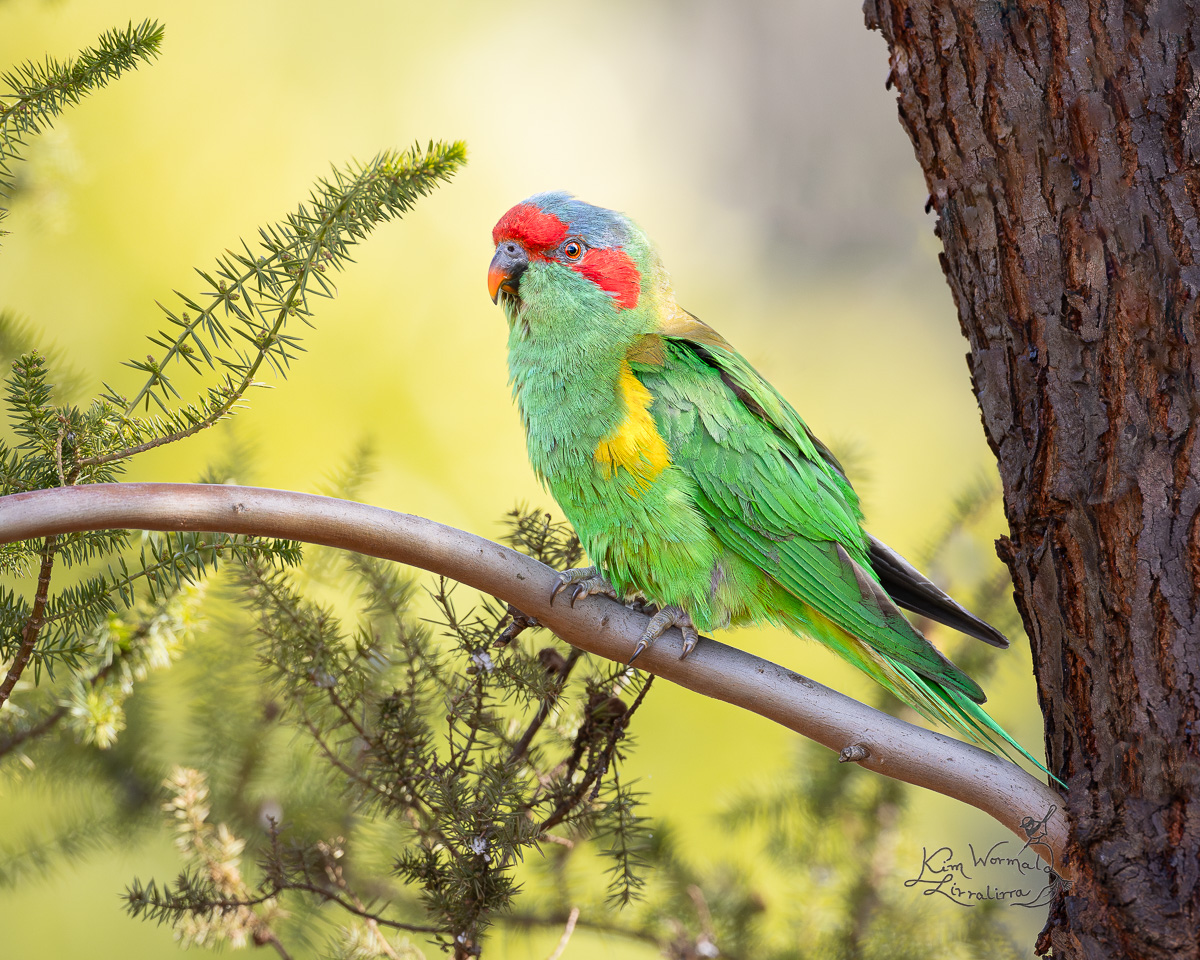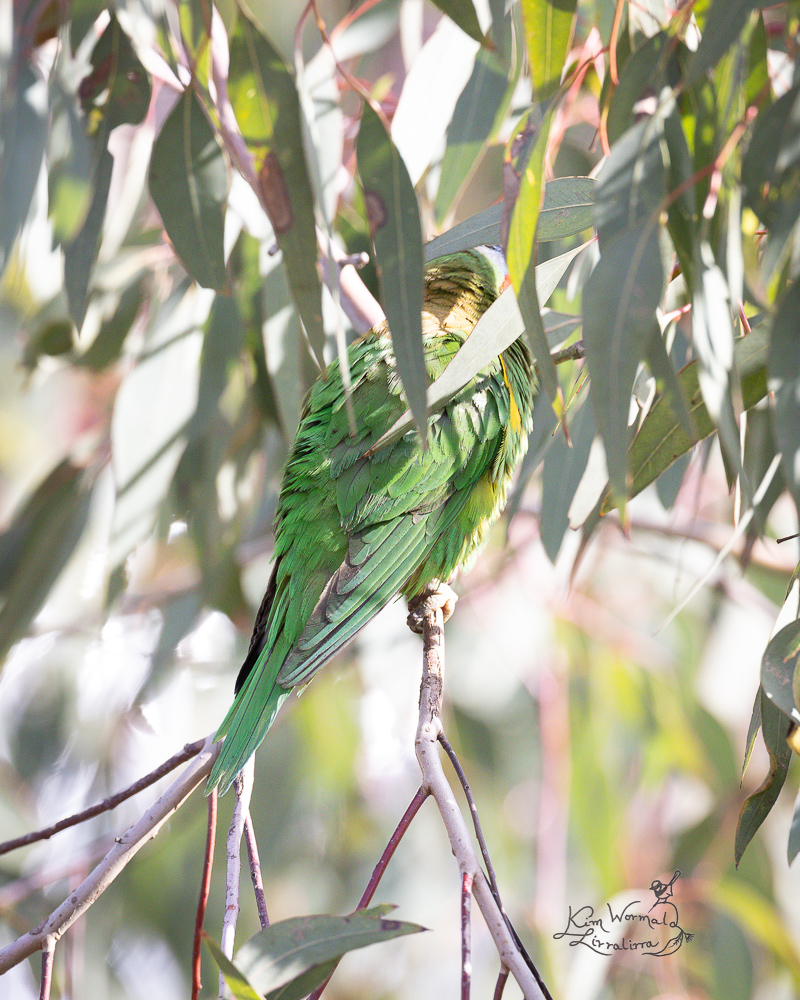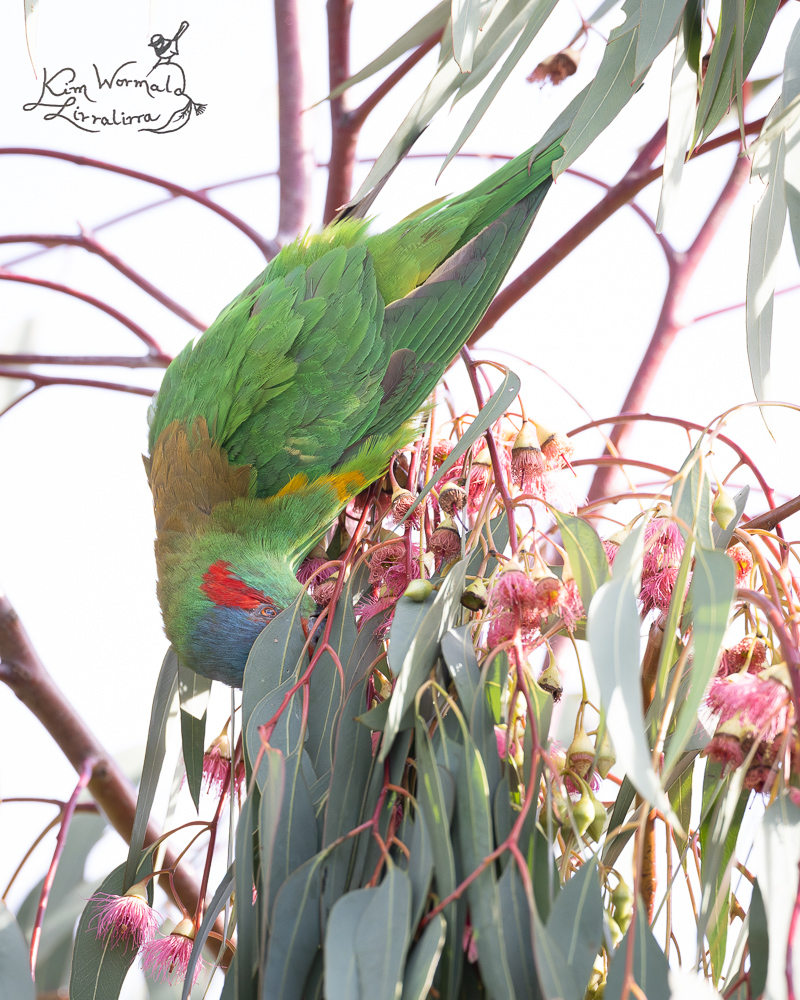What a glorious splash of mid-winter colour! After a long stretch of dreary days, with lots of rain, drizzle and mizzle it was fabulous to head into the sunshine and see birds (and friends) at a local park.

1/1250, f/6.3, ISO 2000
This exquisite lorikeet had been using its brush-tipped tongue to take nectar from a flowering gum when it momentarily flew from the muddle of leaves and blossoms onto an exposed perch. I love the cheerful colours, including the background – thank you lorikeet, you were just what I needed.
I had upped the ISO as there wasn’t much light when I was trying to photograph the lorikeet in the tree top (as in the photographs below). I’m so glad I did as I love the brightness of this shot.

1/1250, f/6.3, ISO 1600
I’d just about given up thinking I’d get a decent shot of the lorikeet as it dashed from blossom to blossom. It was often really tricky to even see the bird in the tree, let alone manage to get the camera focussed on it.

1/1250, f/6.3, ISO 1600
It’s remarkable that such brightly coloured birds can often be so difficult to see. The separate colours create what is called disruptive camouflage which makes it difficult to see an entire bird, instead the overall bird shape is replaced by patches of colour.
Happy birding, Kim
~ Prints and gifts Lirralirra Shop
~ Facebook page Kim Wormald – lirralirra
~ Facebook group Ethical Bird Photography

So pretty!
Such little beauties aren’t they
Well done, Kim. Your perseverance paid off! Beautiful photos.
Cheers,
Liz
With the help of a very lovely spotter! Thanks Liz, Kim
Love the colour and the various poses. Magnificent!
That’s lovely Margot, thank you!
Disruptive camouflage is surprisingly effective isn’t it? I have often noticed it when the Eastern Rosellas come calling. They should stand out – but don’t. And how I would love to see these beauties.
Oh yes, it is incredibly effective. I find it fascinating EC. I wrote a post a few years ago about Rainbow Lorikeets and disruptive camouflage, much the same as the rosellas.